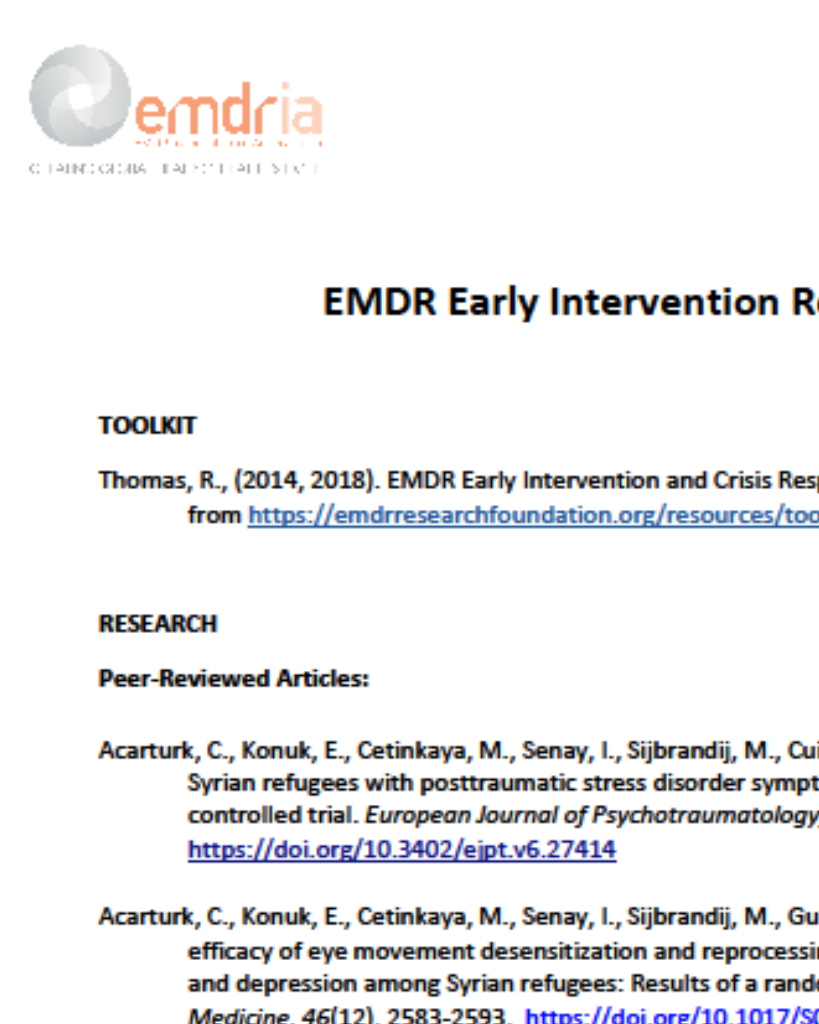Eye movement desensitization and reprocessing for post-traumatic stress disorder from the perspective of three-dimensional model of the experiential selfhood
A theoretical article on the neurobiological rationale of EMDR using the three-dimensional model of experiential selfhood and overview of EMDR therapy neuroimaging studies.
Article Abstract
“Eye Movement Desensitization and Reprocessing (EMDR) therapy is included in many international trauma treatment guidelines and is also shortlisted as an evidence-based practice for the treatment of psychological trauma and Post-Traumatic Stress Disorder (PTSD). However, its neurobiological mechanisms have not yet been fully understood. In this brief article we propose a hypothesis that a recently introduced neurophysiologically based three-dimensional construct model for experiential selfhood may help to fill this gap by providing the necessary neurobiological rationale of EMDR. In support of this proposal we briefly overview the neurophysiology of eye movements and the triad selfhood components, as well as EMDR therapy neuroimaging studies.”
—Description from publisher
Article Access
Purchase/Subscription Required
Fingelkurts, A. A., & Fingelkurts, A. A. (2019). Eye movement desensitization and reprocessing for post-traumatic stress disorder from the perspective of three-dimensional model of the experiential selfhood. Medical Hypotheses, 131: 109304. https://doi.org/10.1016/j.mehy.2019.109304
Date
October 1, 2019
Creator(s)
Andrew A. Fingelkurts, Alexander A. Fingelkurts
Topics
PTSD
Practice & Methods
Mechanisms of Action, Neurobiology
Publisher
Elsevier
Rights
© 2019Elsevier Ltd. All rights reserved.
APA Citation
Fingelkurts, A. A., & Fingelkurts, A. A. (2019). Eye movement desensitization and reprocessing for post-traumatic stress disorder from the perspective of three-dimensional model of the experiential selfhood. Medical Hypotheses, 131: 109304. https://doi.org/10.1016/j.mehy.2019.109304
Audience
EMDR Therapists
Language
English
Content Type
Article, Peer-Reviewed
Access Type
External Resource





